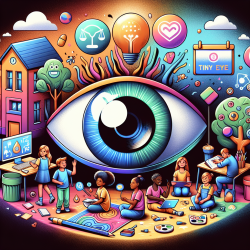Language disorders can significantly impact a student's learning experience, creating barriers that inhibit their ability to effectively communicate, process information, and engage with their educational environment. The research article, "Understanding Language Disorders: The Impact on Learning (1994)," offers a comprehensive overview of how language development and disorders relate to various disabilities, providing invaluable insights for educators and practitioners. By implementing the outcomes of this research, educators can enhance their strategies to support students with language disorders more effectively.
The importance of understanding the relationship between language disorders and learning difficulties cannot be overstated. Students with language disorders may face challenges in areas such as reading comprehension, expressive language skills, and social interaction. These challenges can lead to frustration, decreased motivation, and ultimately, a gap in academic achievement. However, by applying the knowledge gained from "Understanding Language Disorders: The Impact on Learning," educators can adopt a more informed and empathetic approach to teaching these students.
Here are several strategies educators can employ to improve their skills and support students with language disorders:
- Develop a Comprehensive Understanding of Language Disorders: Educators should familiarize themselves with the various types of language disorders and their potential impact on learning. This knowledge will enable them to identify language difficulties early and adapt their teaching methods accordingly.
- Implement Individualized Education Plans (IEPs): Tailoring education plans to meet the specific needs of students with language disorders is crucial. IEPs should focus on leveraging the student's strengths while addressing their areas of difficulty, incorporating goals that are both achievable and challenging.
- Use Multisensory Teaching Techniques: Incorporating visual aids, tactile activities, and auditory input can enhance the learning experience for students with language disorders. Multisensory techniques help reinforce concepts and make learning more engaging and accessible.
- Promote a Supportive Classroom Environment: Creating a classroom culture that encourages patience, understanding, and inclusivity is vital. Students should feel safe to express themselves without fear of judgment, fostering a sense of belonging and community.
- Encourage Peer Support and Collaboration: Facilitating group work and peer tutoring can provide additional support for students with language disorders. Learning from peers in a collaborative setting can boost confidence and improve social skills.
- Engage in Professional Development: Educators should seek opportunities for ongoing learning about language disorders and effective teaching strategies. Workshops, conferences, and webinars can provide valuable insights and practical tools for enhancing educational practices.
Furthermore, it's essential for educators to collaborate with speech-language pathologists, special education professionals, and families to create a comprehensive support system for students with language disorders. This team approach ensures that all aspects of the student's development are considered and addressed.
Encouraging further research and continuous learning is also crucial for educators. The field of language disorders and educational strategies is continually evolving, with new studies and methodologies emerging regularly. By staying informed and open to new ideas, educators can adapt their practices to incorporate the latest findings and best support their students.
In conclusion, "Understanding Language Disorders: The Impact on Learning" provides a foundational understanding for educators to improve their approaches to teaching students with language disorders. By implementing the strategies inspired by this research, educators can make a significant difference in the lives of their students, fostering an environment where all learners have the opportunity to succeed.
To enhance your educational practices and better support students with language disorders, I encourage you to delve into the original research. For a deeper understanding, please follow this link: Understanding Language Disorders: The Impact on Learning (1994).










